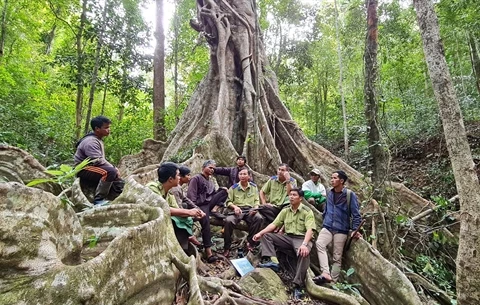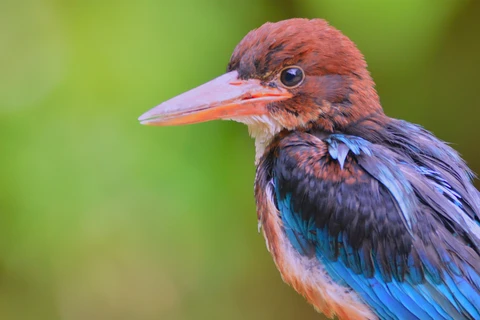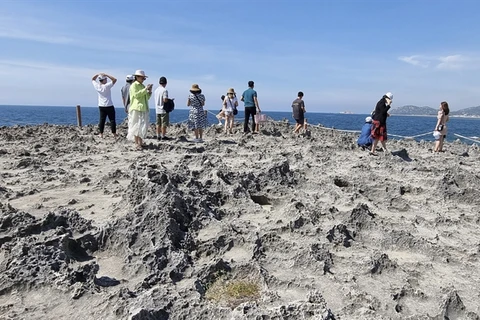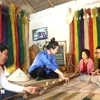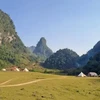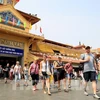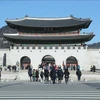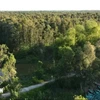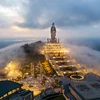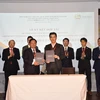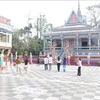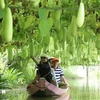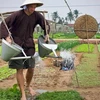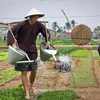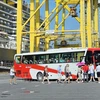Nghe An (VNA) – Covering an area of more than 1.3 million hectares of natural forest, Western Nghe An Biosphere Reserve is not only the largest biosphere reserve in Vietnam, but it is also imbued with cultural, human and historical identities that need to be preserved and developed. It is immensely valuable to environmental science.
In September 18, 2007, the reserve was recognized by UNESCO as World Biosphere Reserve for its ecological and cultural values.
The reserve includes three core zones, namely Pu Mat National Park - a storehouse of fauna and flora species, Pu Huong and Pu Hoat Nature Reserves, and the entire watershed of Ca River.
Biodiversity
The Western Nghe An Biosphere Reserve has a high biodiversity, representing most types of tropical rainforests with a plentiful array of habitats such mountains, wetlands and streams.
This is the only area in the north that has a large area of primitive forest that is well protected. It lies along the border between Vietnam and Laos. There are many rare species in the reserve.
It is home to over 3,960 species, of which 3,019 are vascular plants and 942 are large and small vertebrates. Many of these animals and plants are rare or endangered, as noted by international sources and the Red Book of Vietnam.
In particular, the Western Nghe An Biosphere Reserve is identified as one of the three areas in the country where the Asian elephant population exists in significant numbers according to herd size.
Outstanding cultural value
The Western Nghe An Biosphere Reserve has the largest ethnic cultural diversity among biosphere reserves in Vietnam. In particular, it is populated by two ethnic groups that are unique to Nghe An and are on the verge of losing cultural identity. They are the Dan Lai ethnic group, with 3,000 people residing in Con Cuong district, and the O Du group, with 570 people living in Tuong Duong district.
The diversity and rich cultural identity of ethnic minority groups is the biggest characteristic and source of pride in the western region of Nghe An. Many customs, folk songs, dances, traditional crafts, culinary culture, costumes and stilt-house architecture are imbued with unique indigenous culture.
Many historical and cultural relics have been well preserved through the mobilisation of resources from the private sector. These include the Choong temple festival in Quy Hop district, Chin Gian temple festival in Que Phong district, Van-Cua Rao temple in Tuong Duong district, Hang Bua festival in Quy Chau district and Muong Ham festival in Quy Hop district.
Locals and businesses, with the support and assistance from the administration, have contributed resources to restore relics, traditional festivals and cultural practices, thereby attracting a large number of people and surrounding areas to visit and join religious activities.
Tourism potential
The characteristics of biodiversity and unique culture are advantages for tourism development, especially eco-tourism, cultural and community tourism.
The types of tourism with prospects for development currently being explored by Nghe An province include eco-tourism, sightseeing tours, cultural-community tourism, forest adventure discovery and scientific research tourism.
Such products made by locals as traditional medicine and handicrafts are produced from natural materials. These specialties are highly attractive to tourists.
After being recognised as a World Biosphere Reserve in 2007, tourism activities in the western region of Nghe An have developed remarkably. This has contributed to promoting the local economy, especially in Con Cuong, Tuong Duong and Quy Hop districts.
Infrastructure for tourism has been gradually invested with the participation of businesses.
The tourism development project of Western Nghe An has been undertaken by the provincial Department of Culture, Sports and Tourism. The goals are to expand tourist attractions, focusing on eco-tourism & culture and to promote advertisement to international visitors.
Nghe An province plans to develop urban areas in an ecological approach. Con Cuong district is chosen to pilot this model before expanding to other districts.
Ecotourism and economic models with a green growth approach will be an important highlight in sustainable development in the Western Nghe An Biosphere Reserve, the department said./.

